The 2021 Employment and Salary Survey: Covid-19 and the New Virtual World
Last year was undoubtedly a year of significant challenges and change— Covid-19, working from home, masks, social distancing, and virtual connections to laboratories and conferences. This year’s Spectroscopy salary and employment survey explores the impact on spectroscopic scientists from around the world and their reactions, responses, and outlook.
As always, we report on overall salary trends and how they compare to past years, referring all the way back to the 2001 survey. But unlike previous reports about Spectroscopy salary surveys, which focused heavily on the numerical details of the salary data (1,2), this year we looked beyond the numbers to focus more on broader trends of workplace satisfaction and career attitudes. We asked about job security and solicited respondents’ outlook for a future working in this challenging and technically complex field. We inquired about what spectroscopy professionals consider their greatest workplace concerns. We asked how many respondents are searching for new opportunities and why—and we looked at the effects caused by working in a Covid-19 environment in the workplace. We also asked respondents for their outlook for the remainder of 2021. In sum, we looked into multiple factors of the current and future employment environment.
The Overall Picture
As would be expected, we found that nearly all professionals working in the field of spectroscopy are more concerned than usual about the security of their jobs and incomes, given the Covid-19 pandemic. Nevertheless, respondents are fairly optimistic about the coming year. Nearly 64% of respondents expect the economy to recover to its previous levels during 2021, and 65% believe their job situation will improve during 2021. There is also strong confidence among our respondents (60%) that their own organizations will improve their revenue streams and organizational health in 2021.
Nevertheless, one-third of respondents (35%) indicated that they are interested in seeking a new employment opportunity for reasons unrelated to the pandemic, while 44% say they do not want to leave their current position even if a promising new opportunity was presented.
The Covid-19 Effect
As we all know, the Covid-19 declared pandemic resulted in dramatic changes in working conditions throughout the world. Since the pandemic was officially declared in March of 2020, nearly one in five (15%) respondents were either laid off or furloughed; over half (50.5%) have limited or no access to their laboratories; and, more alarmingly, 34% say they are struggling to stay positive during this globally impacting situation.
Nearly all types and sizes of organizations and their operations have been seriously challenged by the pandemic, as facilities have been closed or have implemented severely restricted access. This has forced the adoption of online or virtual corporate and university classes, meetings, and scientific and business conferences—a mandated requirement in nearly every situation. According to our respondents, the business downturn caused by the pandemic has resulted in nearly two-thirds (60%) of organizations downsizing specifically due to the Covid-19 lockdown, with an additional 25% downsizing for reasons not directly related to Covid-19. It is noteworthy that 10% of respondents say their work functions were offshored during this period.
In spite of the challenges of the shutdown, over three quarters (77%) of respondents feel they are able to complete their work, and even though half (50%) of respondents claim an increased workload, two-thirds (65%) are satisfied with their current working conditions, with 45% saying they actually enjoy the new requirement of working from home.
Is It Time for a Job Change?
Despite all the workplace disruptions— or perhaps because of it—our survey results indicate that just four in ten respondents (44%) are not interested in seeking a job change. Generally, these respondents want to keep their current positions because of their current salary, or because of the location of their office and laboratories. Other reasons for staying put in current jobs are good work team colleagues, good management, and high competition for job positions. The same percentage (44%) would not want to leave their current position even if another promising job opportunity were presented.
On the other hand, a little over one-third of respondents (35%) would leave their current positions for a new or better opportunity. A full 26% indicated they were ready for a career change—either major or minor. According to respondents, the main general reasons for seeking new opportunities are higher salary, seeking new challenges, or dissatisfaction with their current employer. Some respondents have expressed that they are seeking new employment for mostly personal reasons (Figures 1a–1c).
FIGURE 1A: Breakdown of desire to leave one’s current job. The question was, “I would like to leave my current job if a new suitable opportunity presented itself.”
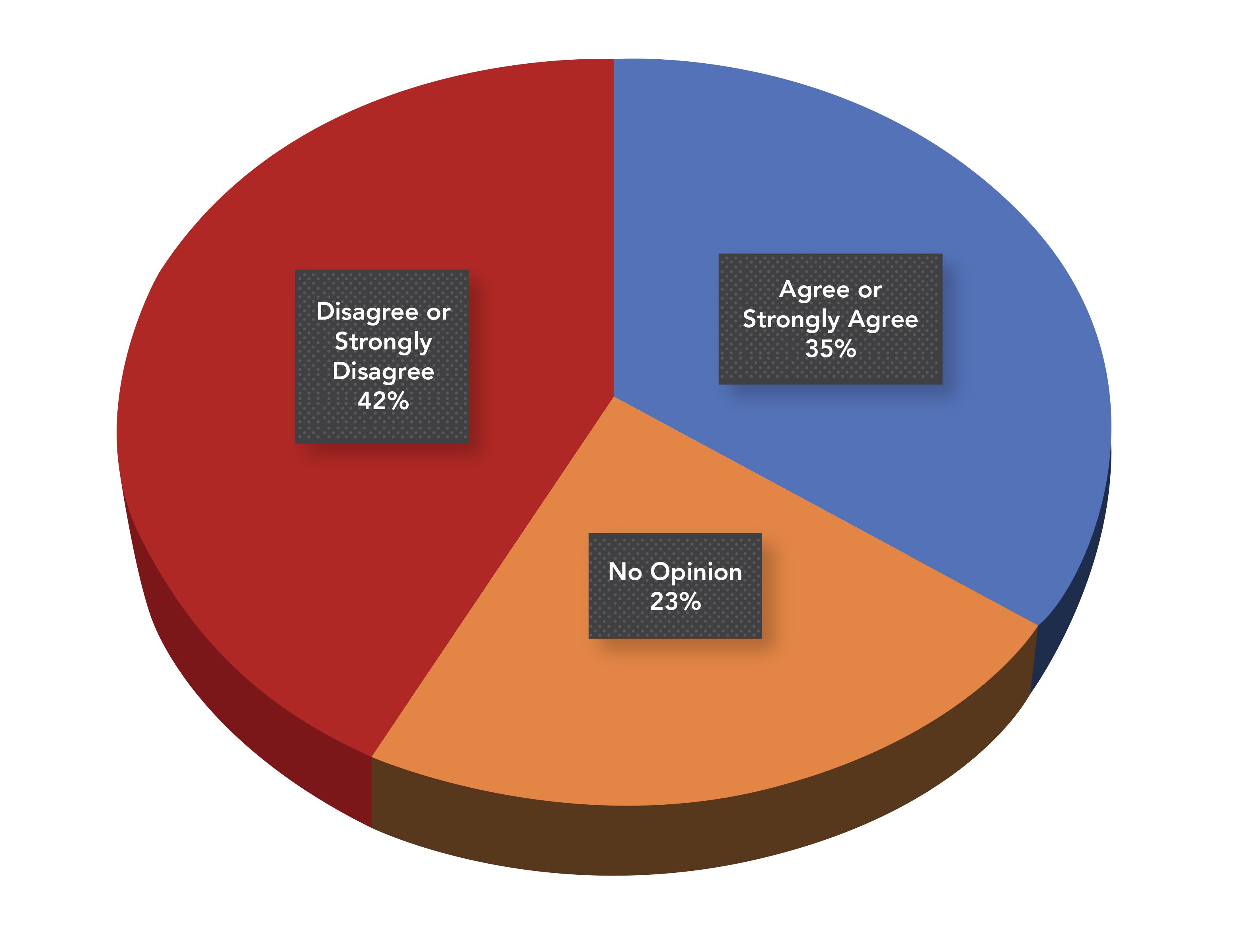
FIGURE 1B: Breakdown of desire to leave one’s current job. The question was, “I do not want to leave my current position even if another opportunity was presented.”
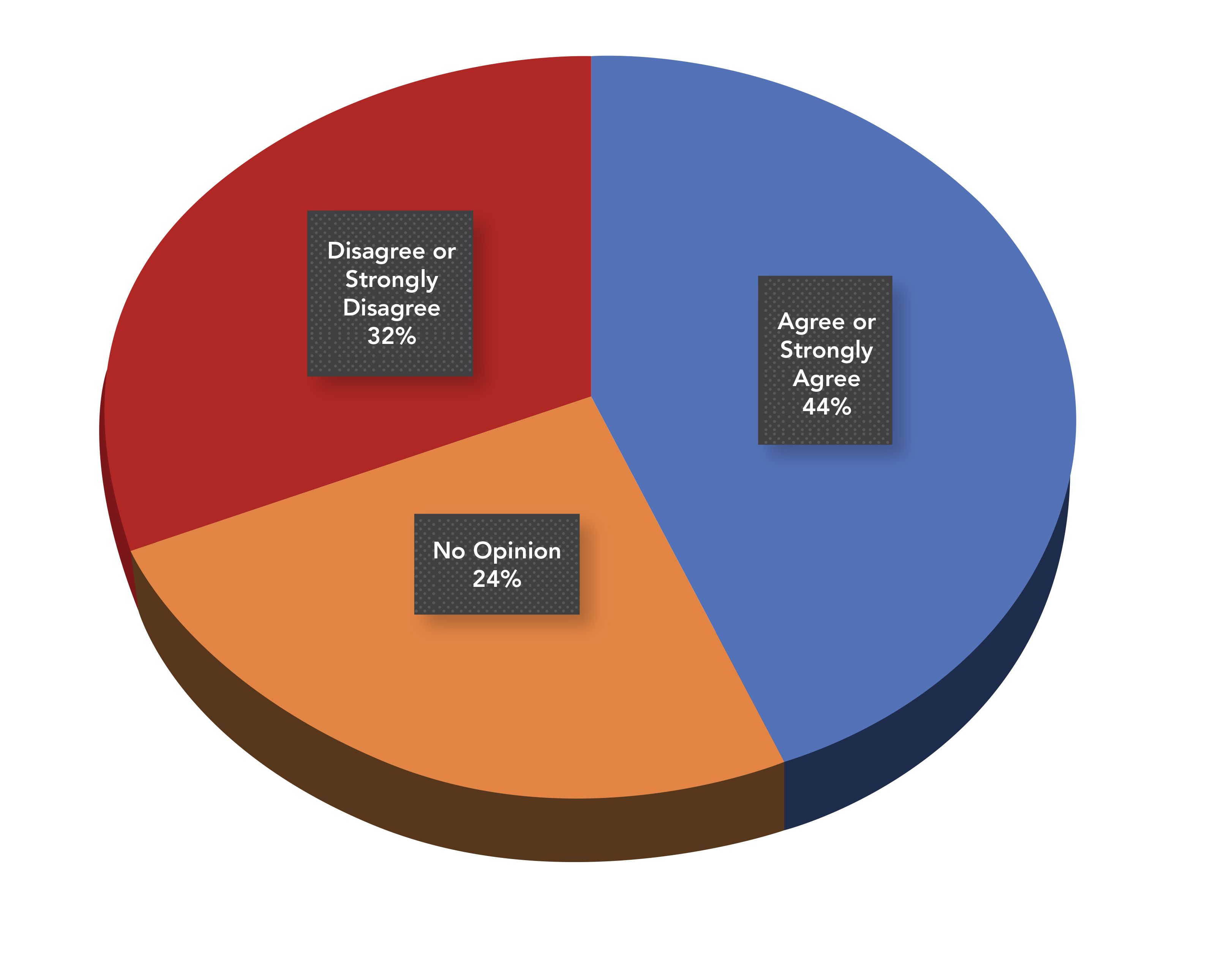
FIGURE 1C: Breakdown of desire to leave one’s current job. The question was, “I am interested in changing careers.”

Of course, thoughts about job change are often linked to perceptions of both job security and the strength of the job market. One in four respondents (25%) feel their jobs are less secure this year than last year, while about the same number (24%) feel they are more secure; the rest (51%) say there is no change in their job security. Figure 2 displays the respondent perception of their current job security—an essential aspect of job satisfaction.
FIGURE 2: Perception of current job security. The survey question was, “How secure do you feel in your current position compared to last year?”
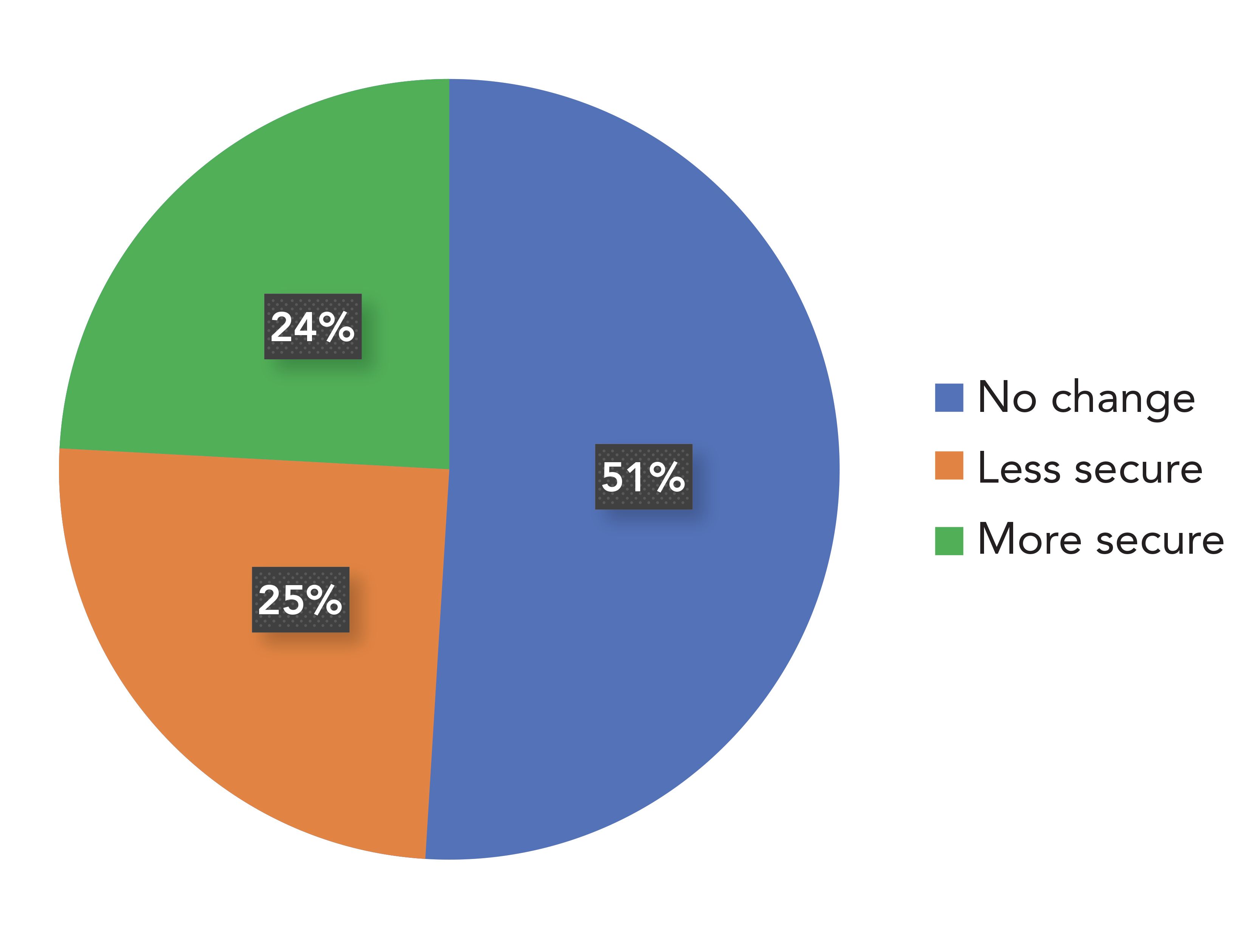
Almost half of survey respondents (55%) believe that the current employment market for spectroscopists is either good or excellent, and only 6% think it is poor. One in seven (15%) assess the job market as one where employer organizations are competing for good candidates, while the rest feel that there is moderate (55%) or strong (30%) competition from candidates for any acceptable open career positions (Figure 3).
FIGURE 3: Strength of the job market for spectroscopists. The survey question was, “If it were necessary for you to change jobs this year, how would you assess the job market?”
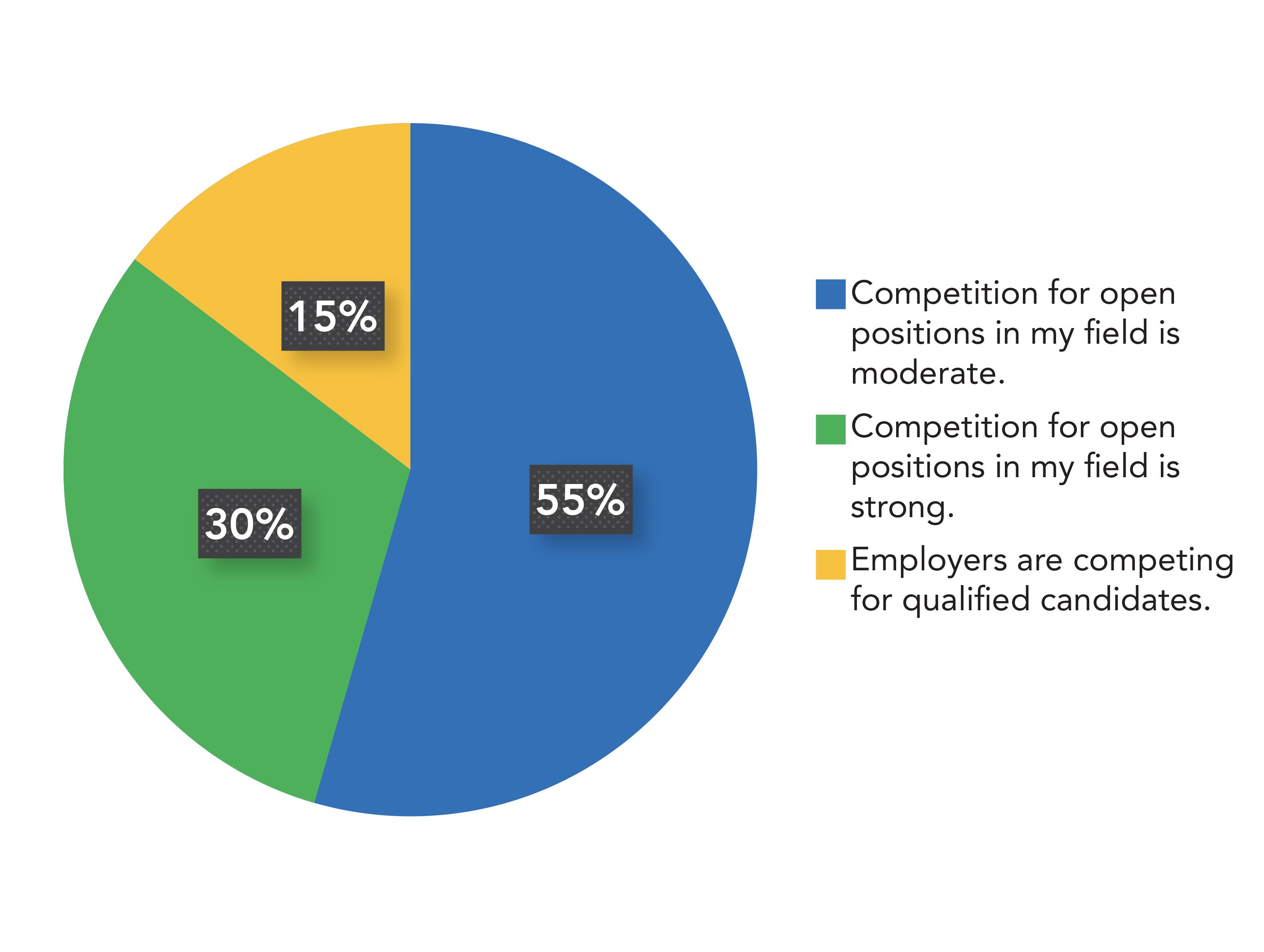
What Factors Are Most Important in a Job
The vast majority (95%) of respondents say that salary and bonus structure is the most important factor in their jobs. The survey results indicated that the next most important factors (in rank order) were job security (93%), the work team (88%), intellectual challenge (88%), the importance of their work (87%), work–life balance (87%), the quality of equipment and laboratory space (85%), retirement benefits (82%), a tolerant work place (82%); and health insurance (79%). Those factors ranking lowest in importance for job satisfaction were maternity or paternity leave (27%)—not important to an older demographic—the prestige of the organization (39%), the ability to work from home (48%)—not a factor this year—and continued training and education (62%).
Salary and Bonus Results for 2021
For 2021, 37% of respondents received raises, but the vast majority (63%) did not. Alarmingly, it was noted that 13% experienced a decrease in pay over this past year (Figure 4). In our 2020 survey (2), we found that 20% of respondents did not receive a raise, but for that year we did not record any salary cuts for full-time professionals.
FIGURE 4: Overall change in salary during this past year. The question was, “What was the overall change in your salary during this past year?”
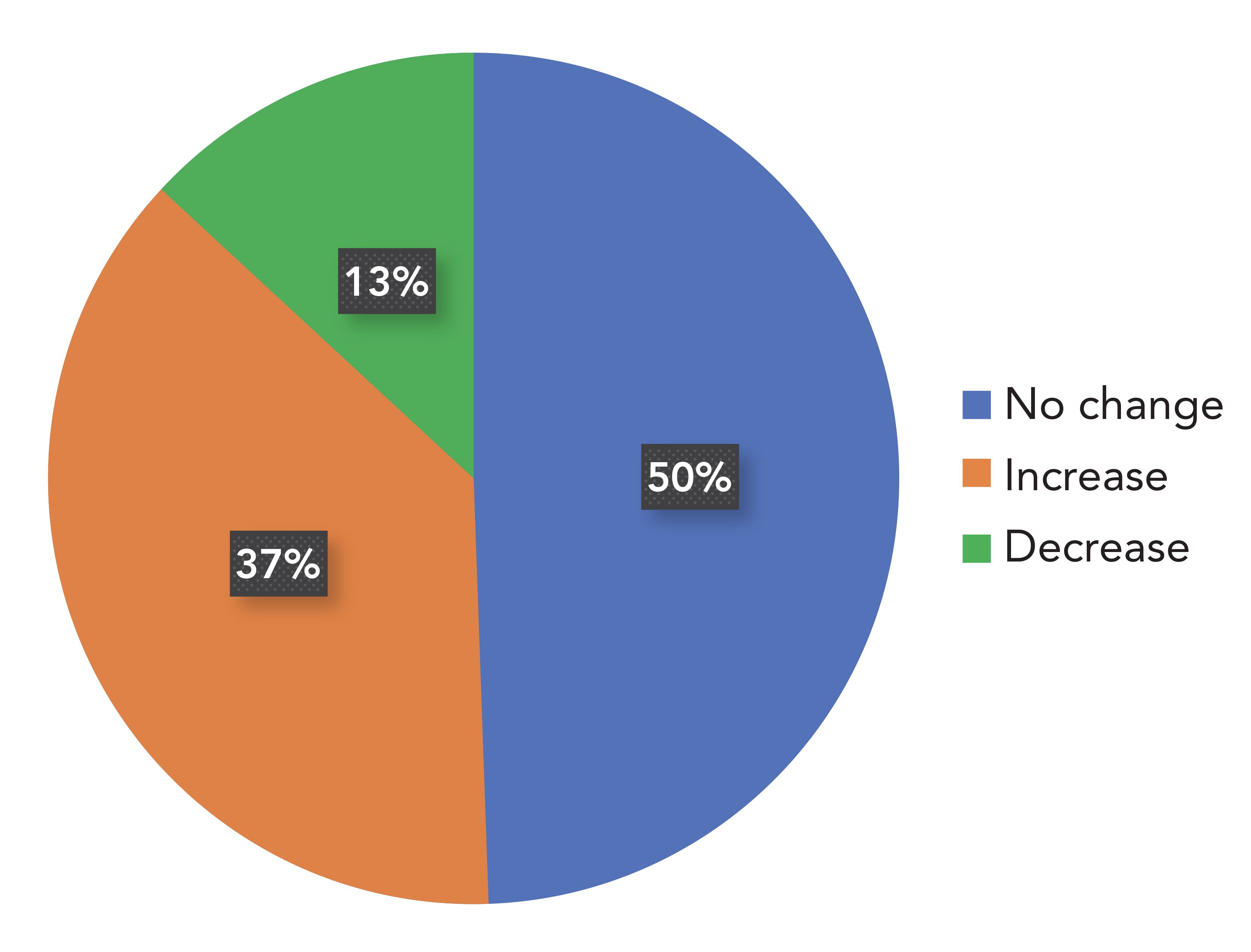
Our questions about pay scales indicated that one in twenty (5%) are very satisfied with their pay, and feel their pay is at the higher end of the market value for their jobs. Nearly one-third (35%) feel they are paid fairly. A full 65%, however, feel that they are paid at the low end of the scale, or are paid below market value.
For this year’s survey, we recorded salaries between $15,000 and $250,000 USD (a typical range for our surveys). The reported mean and median annual salaries for all respondents were $88,025 and $85,000, respectively, indicating the reported salaries are similar to those reported over the past few years. We note that there was a 1.8% increase in average salary compared to last year. Table I displays the annual average salary trend since 2001 for all respondents (See also Figure 5).
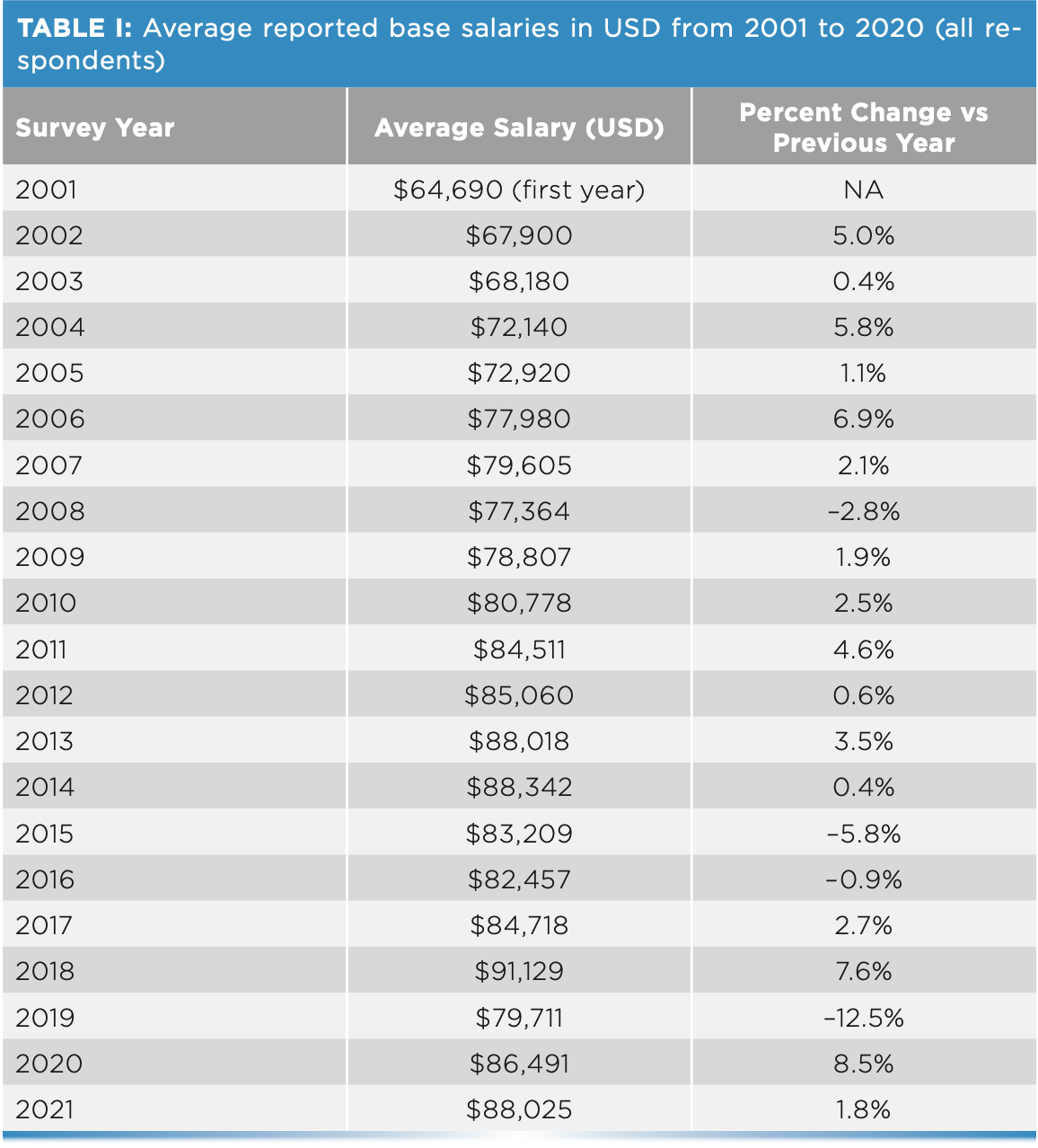
FIGURE 5: Reported average salaries for spectroscopy science professionals from 2001 through 2021 surveys (in $USD).
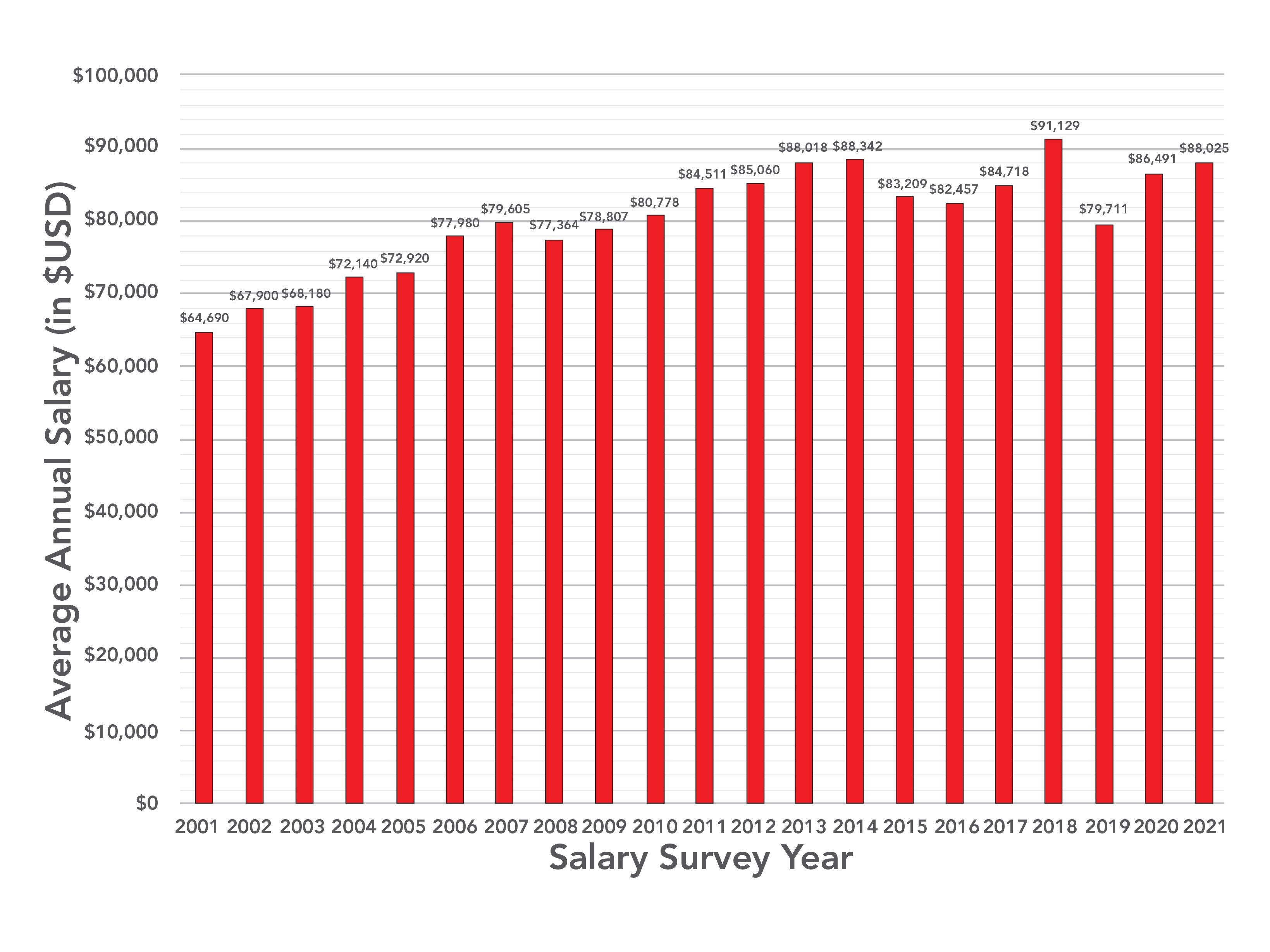
Reported bonuses for the 2021 survey were higher for this year compared to those in recent years. Nearly one-half (47%) of respondents reported receiving an annual bonus (compared to 54% last year) and the bonus amounts ranged from $250 to $40,000. The mean and median bonus values for all respondents receiving bonuses were $19,228 and $11,685, respectively, compared to $14,121 and $11,000 last year.
Respondent Profile
Of the spectroscopy professionals from around the world that responded to this years’ survey, which was fielded in January 2021, the respondents were 66.7% male and 33.3% female. Respondents were from industry (58.9%), academic institutions (23.4%), government or nationally funded laboratories (6.5%), the military (1.9%), and (9.4%) from other organizations, such as private laboratories, hospitals, and medical facilities.
The various job titles of respondents, in order of occurrence, include principal or senior scientist (26.9%), scientist or associate (17.6%), manager (14.8%), full professor (8.3%), director (7.4%), technician (5.6%), CEO, CTO, or president (4.6%), associate or assistant professor (3.7%), laboratory assistant (1.9%), graduate student (1%), and other (8.3%). Note that 87% of respondents are full- time employees, while almost 5% are part-time employees, and nearly 2% are unemployed. Most respondents have a significant number of years of experience in spectroscopic methods, with nearly half of survey respondents with over 20 years (Table II and Figure 6).

FIGURE 6: Number of years as a spectroscopist. The question was, “For how many years have you been working in a career connected with the spectroscopy field?”
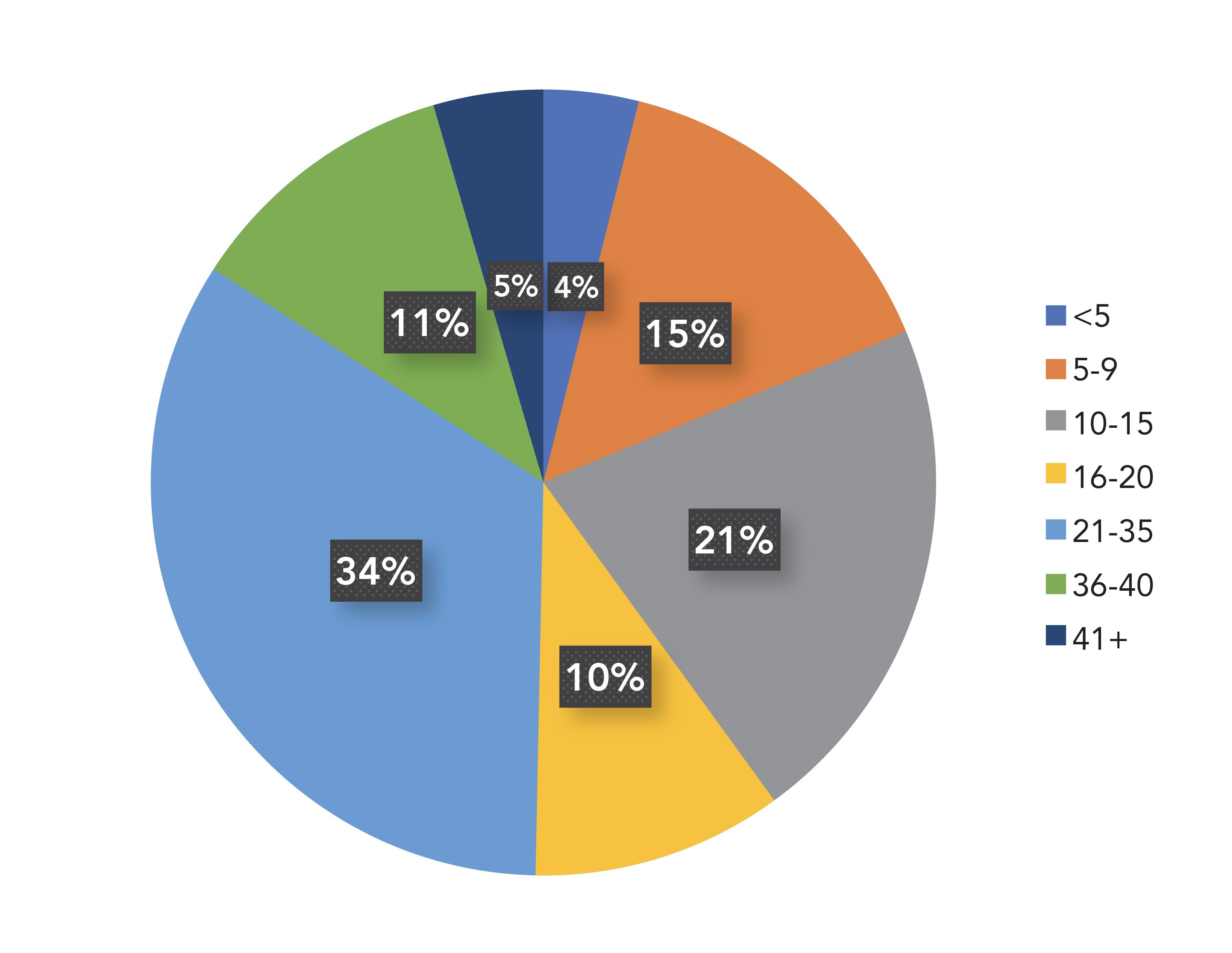
Summary
Spectroscopy professionals across all fields working in 2020 through early 2021 have experienced unprecedented challenges and changes during this more than extraordinary year. Among our respondents, 13% experienced a pay cut this year—likely a result of Covid-19 shutdown issues—and 15% were either laid off or furloughed. Over half (51%) have limited or no access to their laboratories, and 34% say they are struggling to stay positive during this situation. In spite of all that, over three quarters (77%) of respondents feel they are able to complete their work despite the unusual challenges of this year.
They are also fairly optimistic about the coming year: Two-thirds of respondents expect the economy to recover in 2021, and the same number believe their job situation will improve during 2021. Our respondents also have strong confidence that their employers will have improved revenue in 2021 (60%).
Of course, the ongoing concerns related to any workplace remain, pandemic or not. We found that the greatest workplace concerns of professionals in the spectroscopy field are salary and bonus structure, job security, working colleagues and associates, intellectual challenge, the importance of the work, and work–life balance.
Almost two-thirds (65%) of spectroscopists reported they are satisfied with their current working conditions, even though half of respondents claim an increased workload. Just over one-third of our respondents indicate they are interested in seeking a better employment opportunity beyond their current situation.
We noted that just over one third of respondents received raises, while the remaining two-thirds did not—and 13% experienced a decrease in pay over this past year. A full two-thirds feel that they are either paid at the low end of the scale or are paid below market value. The mean and median annual salaries for the 2021 survey are similar to those in the recent past, with a slight increase for this year vs. the past two survey years (2019 and 2020 [1,2]).
All in all, 2021 will be remembered as an extremely challenging and confusing year. In spite of it all, professionals working in spectroscopy continue to remain positive, and to apply themselves and their skill sets to improve products, the environment, health research, and to advance the world of chemistry.
References
(1) J. Workman, Jr., Spectroscopy 34(3), 26–34 (2019).
(2) J. Workman, Jr., Spectroscopy 35(3), 39–50 (2020).
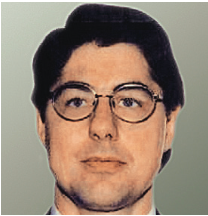
Jerome Workman, Jr. serves on the Editorial Advisory Board of Spectroscopy and is the Senior Technical Editor for LCGC and Spectroscopy. He is also a Certified Core Adjunct Professor at U.S. National University in La Jolla, California. He was formerly the Executive Vice President of Research and Engineering for Unity Scientific and Process Sensors Corporation. Direct correspondence to jworkman@mjhlifesciences.com●
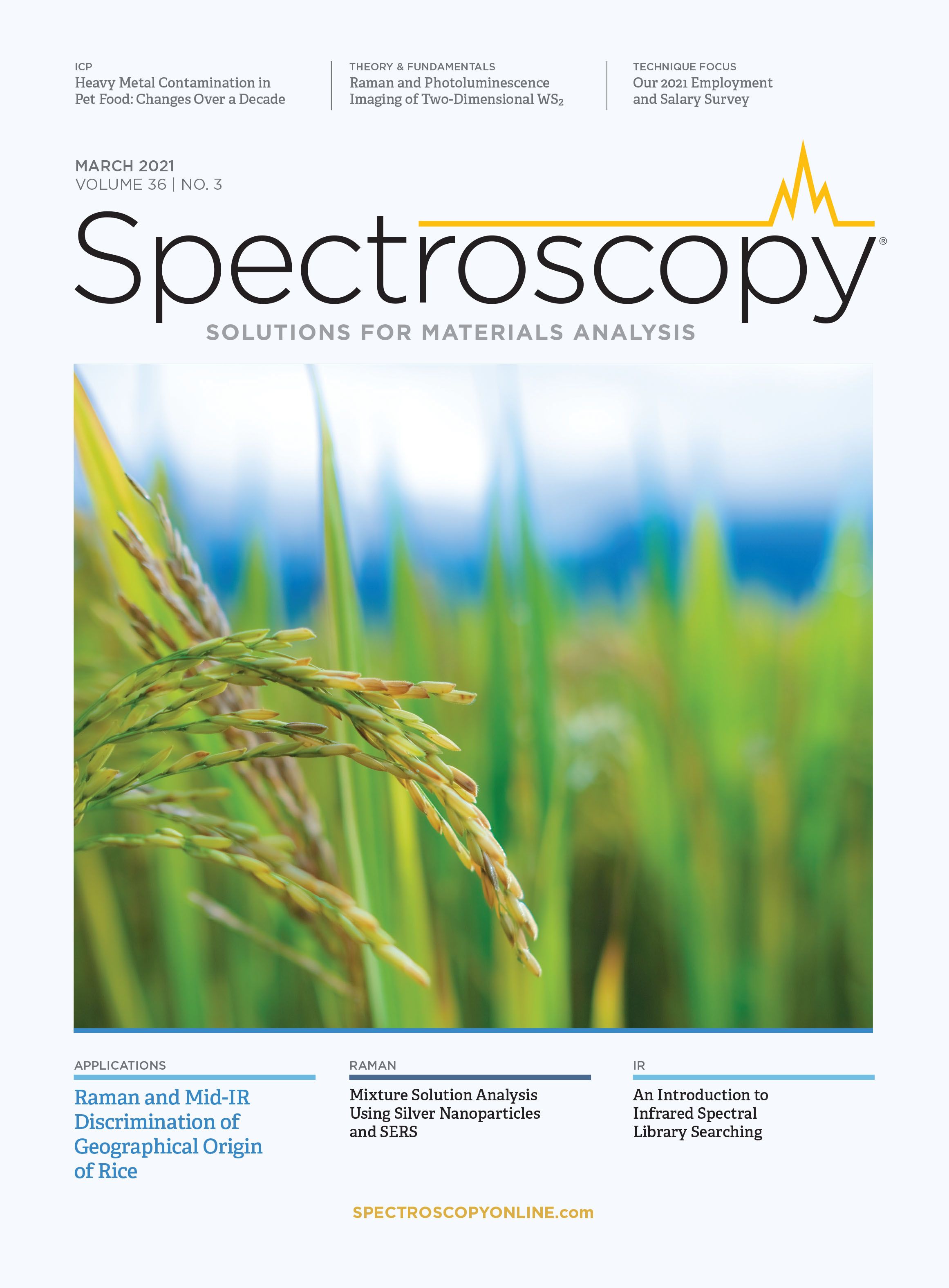
Best of the Week: AI and IoT for Pollution Monitoring, High Speed Laser MS
April 25th 2025Top articles published this week include a preview of our upcoming content series for National Space Day, a news story about air quality monitoring, and an announcement from Metrohm about their new Midwest office.
LIBS Illuminates the Hidden Health Risks of Indoor Welding and Soldering
April 23rd 2025A new dual-spectroscopy approach reveals real-time pollution threats in indoor workspaces. Chinese researchers have pioneered the use of laser-induced breakdown spectroscopy (LIBS) and aerosol mass spectrometry to uncover and monitor harmful heavy metal and dust emissions from soldering and welding in real-time. These complementary tools offer a fast, accurate means to evaluate air quality threats in industrial and indoor environments—where people spend most of their time.